Iranian army is the most eclectic in the world
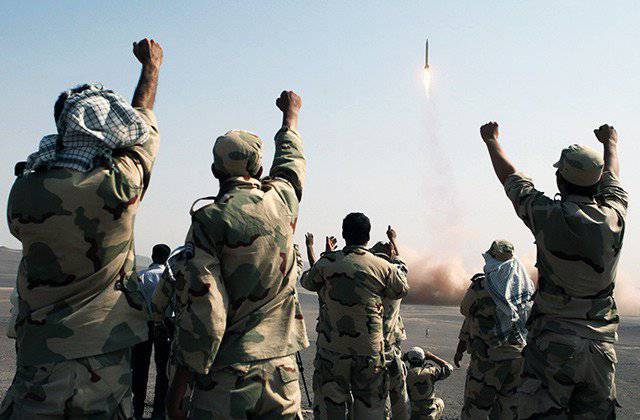
Military equipment of the Iranian army collected from around the world. Despite the low level of its own military-industrial complex, the Iranian armed forces have significant combat potential
The Iranian military system is unique: the army, preserved from Shah times, and the Islamic Revolutionary Guard Corps (IRGC) created after the 1979 revolution coexist in it, and the army and the IRGC have their own ground forces, air force and navy. The IRGC performs the functions of the “second army” and at the same time the internal forces of the Islamic regime.
From the world to tank
A kind of analogue of such a system can be considered the coexistence of the Wehrmacht and the SS troops in Nazi Germany. In fact, part of the IRGC is the Basij militia of potential numbers (after mobilization) of several million people. In addition, the IRGC includes a structure that performs strategic reconnaissance and sabotage functions - the special forces “Kods”. Both the army and the IRGC are subordinate to the spiritual leader of Iran (now Ayatollah Khamenei), and the elected president is only one of the 11 members of the Supreme National Security Council. There is the main political and ideological management and the same management types of the Armed Forces. The apparatus of Islamic observers operates, without the sanction of which no decisions of the commanders are valid (that is, it is a complete analogue of the Bolshevik commissars in the Red Army during the Civil War).
Currently, the armed forces of Iran are among the most eclectic in the world in terms of military equipment. They have weapon: American, English and French, surviving from the times of the Shah; Chinese and North Korean 1980 – 88 delivered during the war with Iraq; Soviet and Russian, re-exported from Syria, Libya and the DPRK during the war or bought in the USSR and Russia after it ended; own, copied from foreign samples. Most of the weapons and equipment are outdated, and with respect to Western designs there is also the problem of lack of spare parts and ammunition.
The most physically new is the technology of its own production. Iran largely repeats the Chinese practice of copying almost any foreign specimen he has. However, the scientific, technical and production capabilities of the Iranian military-industrial complex are much lower than those of the military-industrial complex of the People's Republic of China, so most of the domestic technology is of very poor quality, due to which it enters the armed forces in insignificant quantities. Of course, the Iranian Armed Forces have a negative effect on international sanctions, because of which it can conduct legal military cooperation only with the DPRK, which is also under sanctions.
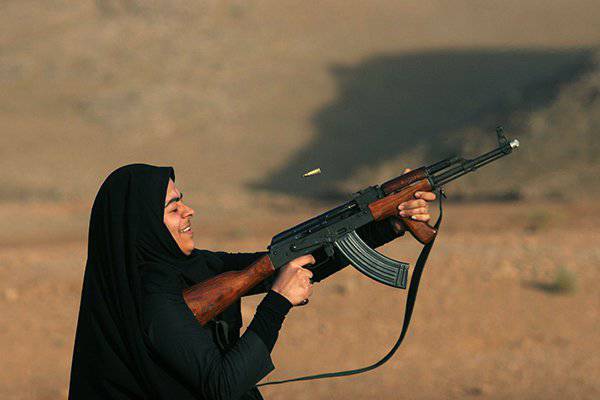
During the war with Iraq, Iranian military personnel, as a rule, demonstrated a very low level of combat training. There are big doubts that over the past quarter of a century radical changes have taken place in this regard for the better.
Since the losses of the Iranian Armed Forces during the war with Iraq are not precisely known, the current technical condition of the military equipment and the production capabilities of the military-industrial complex, the number of weapons of the Iranian Armed Forces is estimated very roughly (this should refer to the figures below). The data on the organizational structure of the Armed Forces of Iran, especially the ground forces, are also not completely reliable.
Below is the total number of weapons and equipment for the Army and the IRGC. Belonging to the IRGC is specifically stipulated in cases where it is reliably known.
What is the Iranian army
The army ground forces are divided into four territorial commands: Northern, Western, South-Western, Eastern. Most of the units are located in the west of the country. In total, the Army’s ground forces have five armored divisions, three mechanized divisions, four infantry divisions, one armored brigade, six artillery brigades. There are also powerful mobile and special forces - airborne and airborne assault divisions, two airborne brigades, four airborne assault brigades, a commando brigade.
The ground forces of the IRGC include 26 infantry brigades, two mechanized, two tank divisions, 16 infantry, six armored, two mechanized, one - chemical defense, one - psychological war, ten groups (missile, chemical defense, communications, air defense, engineering, five artillery warfare ).
Armed with tactical missiles "Tondar" (up to 30 PU and 150 – 200 missiles, firing range - up to 150 kilometers). They are copied from the Chinese M-7 missiles, which, in turn, are based on the HQ-2 anti-aircraft missiles (a Chinese copy of the Soviet C-75 SAMs).
The tank fleet of Iran is extremely diverse. The most modern are the 480 Soviet T-72 and roughly the 150 own "Zulfikar", created on the basis of the T-72. There are also many old tanks - up to 250 English "Chief", 75 Soviet T-62 and 150 created on their base North Korean "Chonma-ho", 540 Soviet T-54 / 55 (including 200 modernized in Iran itself tanks 220 59 250 69 150 60 Chinese 1 168 48 Chinese 170 47 110 20 Chinese XNUMX XNUMX XNUMX XNUMX XNUMX XNUMX. In addition, XNUMX of the Scorpion British light tanks and XNUMX of their own Tosan tanks based on them are in service.
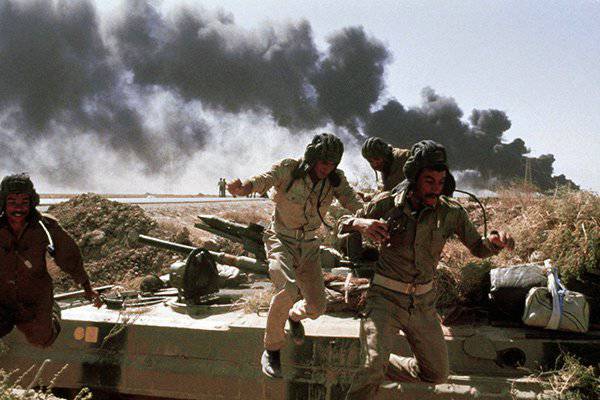
Armed land forces consist 189 Brazilian BRM HER-9, 623 Soviet BMP (210 BMP-1, 413 BMP-2), about 700 BTR (up to 250 American M113A1 to 150 Soviet BTR-50 before 150 BTR-60, 140 own "Borag").
Self-propelled artillery includes up to 60 Soviet SAUs 2С1 and their local copies Raad-1 (mm 122), 180 American М109 and their local copies Raad-2 (155 mm), 30 North Korean M-1978 XNXXXXXX. American M170 (30 mm) and 107 M175 (30 mm). There are over 110 thousands of towed guns and five thousand mortars. The rocket artillery has seven old Soviet MLRS BM-203, 2,2 BM-11 “Grad” and 100 of their local copies “Nur” (21 mm), 50 Chinese Tour 122 and 700 of their local analogues “Haseb” (63 mm), ten domestic Fajr-600 and nine North Korean M-107 (mm 3).
There are several thousand ATGMs — the American Tou (and their local copies of Tufan), the Soviet ATGM Malyutka (and their local copies of Raad), Fagot, Konkurs.
Military air defense systems include 29 modern Russian short-range air defense systems Tor-M1 and 250 local Shahab systems, copied from the Chinese HQ-7 (which is itself a copy of the French Krotal air defense system). There is up to 400 old Soviet Strela-2 MANPADS, up to 700 more modern Igla, 200 Swedish RBS-70. In service is up to 100 Soviet ZSU-23-4 "Shilka" and, possibly, 80 of quite old ZSU-57-2. The number of anti-aircraft guns is close to a thousand.
In the army aviation there are 33 light aircraft, up to 50 American AN-1J "Cobra" combat helicopters, some of which underwent modernization in Iran itself, about 200 multi-purpose and transport helicopters.
The Iranian Air Force is divided into three Operational Command: "North", "Center", "South". In their composition 17 tactical air bases. The IRGC air force has five air bases and five missile brigades.
It is in the IRGC air force that all ballistic missiles are located (except for the above-mentioned tactical missiles of the ground forces). This is up to 20 Launchers (PU) “Shehab-1 / 2” (up to 600 missiles “Shehab-1”, to 150 “Shehab-2”) copied from the North Korean “Hwason-5 / 6” (range - to 500) kilometers), 32 PUU MRSD "Shehab-3" (North Korean "Nodon", to 1500 kilometers). There is also an unknown number of missiles of other types, the most promising and modern of which should be considered the Segil MRBM (range - up to two thousand kilometers).
The fleet is extremely eclectic. It includes Western-made cars purchased back under the Shah, Chinese and Russian, purchased in 1980 – 90-e. In addition, part of the Su-24 bombers, Su-25 attack aircraft and MiG-29 fighters, all Su-22 attack aircraft and Mirage-F1 fighters flew from Iraq to 1991 and were then confiscated by Iran.
Attack aircraft consists of Soviet-made aircraft. These are the 34 bomber Su-24, the 37 attack aircraft Su-22 (all are in storage pending upgrades) and the 13 Su-25. All Su-25 are part of the air force of the IRGC.
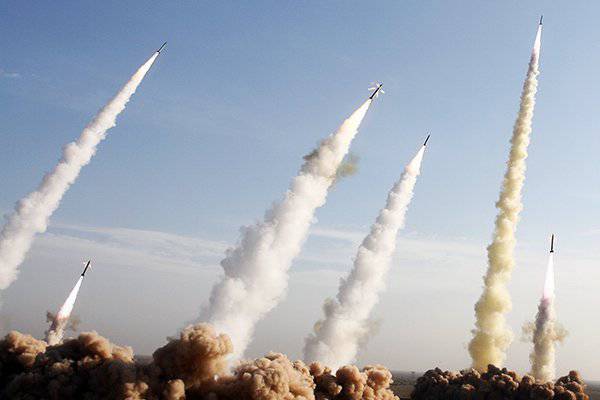
A significant number of American-made fighter aircraft remain in service - at least 27 F-14А (one more in storage), at least 36 F-4D / E, at least 61 F-5. The latter include several units (no more than 20) of the Saega and Azaraksh fighters, based on the F-5 in Iran itself. Their mass production is unlikely to be deployed due to the low TTH of these machines. In addition, the Air Force has ten French Mirage-F1 fighters (8 ЕQ, two combat training BQ; another seven ЕQ, four BQ in storage), 28 Soviet MiG-29 (including seven combat training UB ), 36 Chinese J-7 (including 12 combat training JJ-7), copied from the MiG-21.
Reconnaissance aviation consists of American aircraft - seven RF-4Е and up to 13 RF-5А based on fighters, one RC-130Н based on a transport aircraft.
There are six American tankers (four Boeing 707, two Boeing 747) and more 100 transport aircraft. Of these, the 11 Chinese Y-12, 13 Soviet IL-76 and 10 Ukrainian An-74 are in the air force of the Kirill. You can also note the light transport aircraft "Iran-140", which are created in Ukraine (as An-140), but are now produced in Russia and Iran, because Ukraine itself could not produce or operate them.
In addition, the Iranian Air Force has 140 training aircraft and 86 helicopters, of which 38 of the Russian Mi-17 are in the CSIR Air Force.
Ground defense includes 30 English Rapira air defense missile system and Taygket 15 (the latter are most likely decommissioned), seven 42 PU batteries of the Chinese HQ-2 air defense missile (a copy of the Soviet C-75), 25 batteries (150 PU) of the US air defense missile system “Improved Hawk” and its local copy “Mersad”, three batteries of the Soviet “Kvadrat” air defense missile system (12 PU) and one regiment of C-200 SAM (12 PU).
The Iranian Navy is stationed mainly in the Persian Gulf, but recently the forces in the Caspian Sea have been increasing.
There are three fairly modern Russian submarines (Submarines) of 877 Ave., three small submarines (Besykh, Fateh, Nahang), 21 super-small submarines of their own building of the Gadir type and four Yugoslav SMPLs of the Yugo type.
Three naval frigates of the “Alvand” type built in the Navy remain. According to a similar project, two frigates of the Jamaran type were built in Iran in recent years (and proclaimed as destroyers). The sahand frigate is being built.
Three old corvettes remain in service - two types of Bayandor, one Hamzeh.
There are ten Chinese Hudong-type missile boats, ten Kaman types (French built under the Combat-2 project) and three similar Iranian-built Sina, up to 80, small self-built missile boats with small Chinese C-701 anti-ship missiles and C-704.
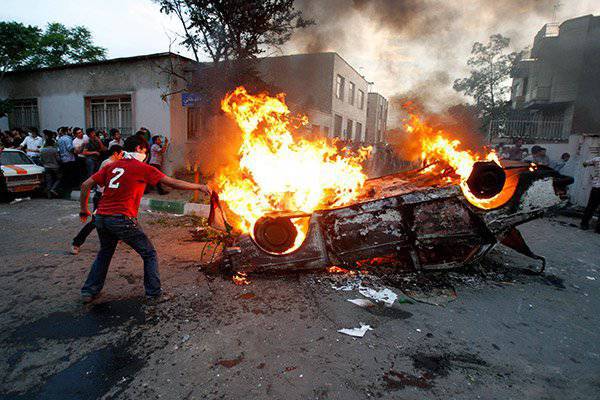
As part of the Navy is 14 "large" and up to 150 small patrol boats, many of whom are armed with installations MLRS or ATGW.
There are five minesweepers. The landing forces include four Hengam-type TDKs, six Ormuz-type TDKs, three Fuke small DKs, seven English-built hovercraft (6 BH7, 1 SRN6).
All frigates and rocket boats, including Western ones, are armed with Chinese anti-ship missiles or their local counterparts.
The composition of the Navy CSIR includes all SMPL, Hudong-type missile boats, up to 30 small missile boats, up to 50 small patrol boats. The rest of the ships and boats - in the composition of the Navy Army.
The Damavand frigate (the second ship of the Jamaran type), the Hamzeh corvette (built in 1936 year), two Sina missile boats, several patrol boats, one minesweeper are deployed on the Caspian Sea.
Naval aviation has five American base patrol aircraft R-3F, four American aircraft REAR "Falcon-20", 13 transport aircraft, ten American anti-submarine helicopters SH-3D, seven helicopters, minesweeper RH-53D, 17 transport helicopters.
The Marines include two brigades, including one in the IRGC.
In the Coastal Defense - one brigade (four PU each) of the Chinese anti-ship missiles HY-2 and C-802.
Iran is a situational ally of Russia
In general, the Iranian Armed Forces have a very significant combat potential, while possessing a mass of flaws (first of all, low quality of equipment and equally low level of training of personnel). On the other hand, the Armed Forces of neighboring countries, as a rule, have the same drawbacks. The main potential opponents of Iran are the Arab monarchies headed by Saudi Arabia, as well as Israel and, possibly, the United States. Of course, the Iranian Armed Forces are unable to withstand the massive American strike, but there are significant doubts that the US Armed Forces are ready for such a strike. If Iran succeeds in creating a nuclear weapon, it will translate it into a new geopolitical quality, making it a regional superpower.
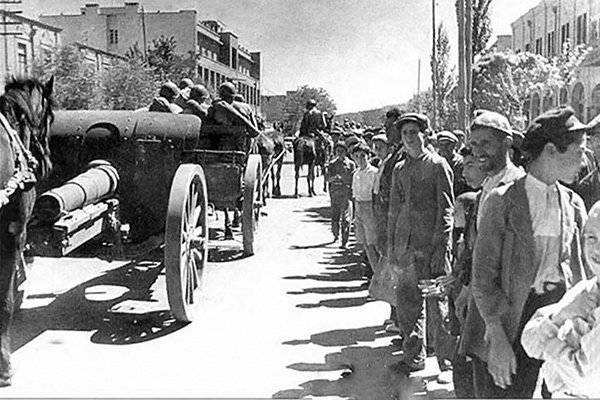
In the Russian public consciousness, Iran is extremely mythologized. On the one hand, the American-Israeli myth about Iran as a kind of totalitarian monster, a stronghold of Islamic terrorism, is strong enough. In fact, Iran is one of the most democratic countries in the Islamic world, where absolutely real elections are held. In particular, all of the last three Iranian presidents (Khatami, Ahmadinejad, Rouhani) won their first elections, contrary to all analysts' forecasts. The position of women in Iran is much better than in the vast majority of Arab countries. And finally, al-Qaeda is traditionally one of the main opponents of Iran (if only because it is Sunni, and Iran is Shiite).
In contrast to this myth, the myth was born in Russia about Iran as our “traditional ally”. In fact, Iran has never been our ally. The Russian Empire fought Persia at least six times, and the wars were very hard and protracted. In 1941, the USSR and Great Britain jointly occupied Iran, since it was openly pro-German. The post-war shah's Iran was one of the closest allies of the United States and Great Britain, that is, it could not be an ally of the USSR. After the overthrow of the Shah, Ayatollah Khomeini proclaimed the United States "the Great Satan", and the USSR - the "Little Satan". Tehran actively supported the Afghan dushman during the "our" Afghan war.
For the first time in stories Iran became our de facto ally about 20 years ago, at the end of 1990's. It was a union based on the principle of commonality of the enemy, that is, the Afghan Taliban. It was Russia and Iran that helped resist the Afghan Northern Alliance, which in the fall of 2001, successfully “privatized” the United States, without saying a “thank you” to either Moscow or Tehran.
And now Iran remains to us a situational ally on the same principle: it restrains the Arab monarchies and the Sunni terrorism they sponsor. Therefore, Moscow is absolutely not obliged to listen to Israeli-Saudi-American tantrums about Iran. In particular, we will even survive the emergence of nuclear weapons, if this is still the case. First, Iran’s nuclear potential will never be even remotely qualitatively and quantitatively comparable with Russia's. Secondly, the leaders of Iran are not completely irrational suicides. Suicidal terrorism came up with the Sunnis, not the Shiites. And Iranian missiles will be aimed not at Moscow and not at Volgograd, but at Riyadh. What will be very profitable for us.
Information